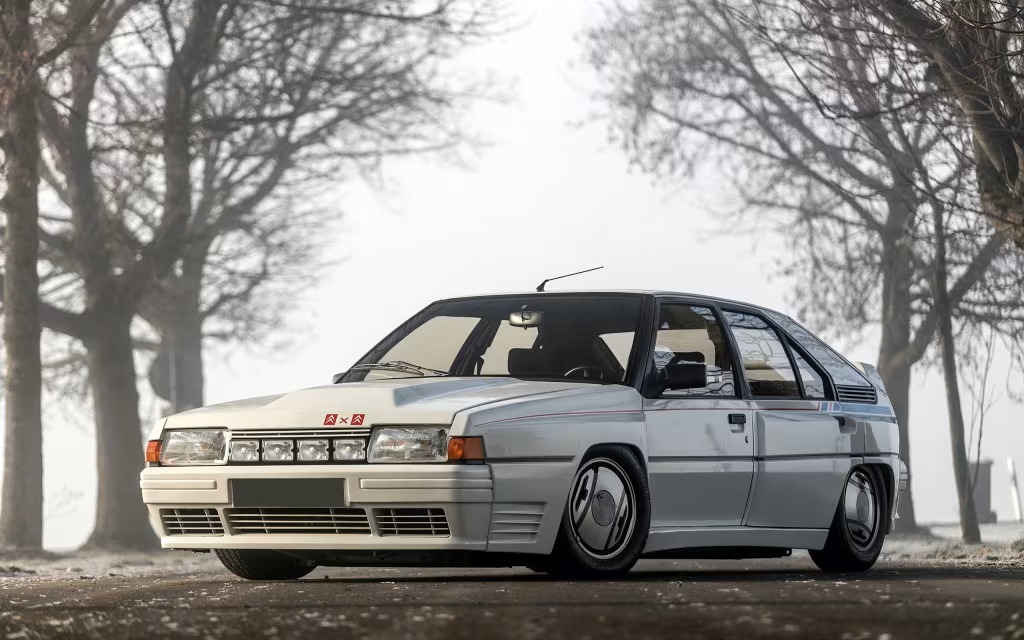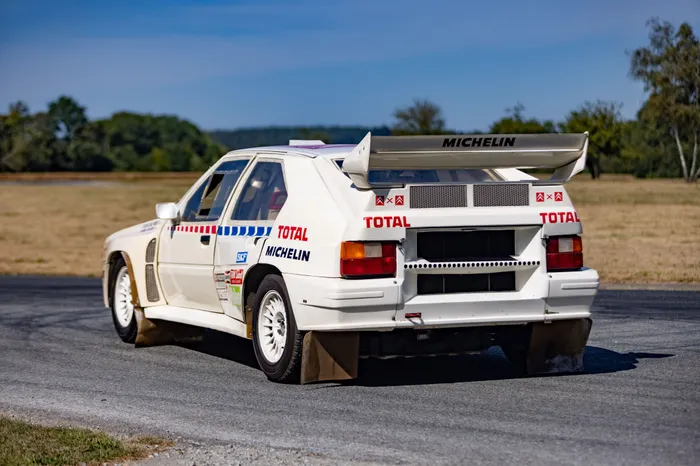[Competition Citroëns] Citroën BX 4TC : Citroën's broken dream in Group B
- Jérémy

- Aug 24
- 4 min read

To conclude our summer series on the Citroën cars that have made their mark on motorsport history, we delve into a case as fascinating as it is painful: the Citroën BX 4TC. As the 1980s witnessed the peak of the spectacular and dangerous Group B in the World Rally Championship, Citroën, with its reputation as an innovative manufacturer, could not remain a mere spectator. The brand decided to enter the arena with a car derived from its flagship model of the time, the BX. This marked the beginning of an ambitious, intense, and ultimately short-lived adventure, the memory of which is etched in the minds of enthusiasts as a symbol of a bold but flawed dream.
The genesis of an ambition: creating a Group B car from the BX
In the early 1980s, motorsport was dominated by the monsters of Group B. Cars like the Audi Quattro and the Peugeot 205 Turbo 16 were redefining performance standards, captivating millions of spectators worldwide. At Citroën, driven by its competition division, Citroën Racing, the decision was made rather late, around 1983, to develop its own war machine. Rather than starting from a blank slate, a strategic and marketing-driven choice was made: the future racing beast would be an extrapolation of the successful family sedan, the BX. The objective was clear: to capitalize on the model's popular image to enhance the brand's reputation in competition.
However, this choice proved to be a major technical compromise from the outset. Unlike its rivals, which were designed with a mid-rear engine for optimal balance, the BX 4TC had to work with the standard BX's architecture. The engineers, therefore, placed the engine in a longitudinal front position, overhanging the front axle—an unorthodox solution that complicated weight distribution. The chosen engine was not a pure Citroën product but a specific version of the Simca-Chrysler N9TE engine, a 2,141 cc four-cylinder unit supercharged by a Garrett turbo. To obtain homologation in Group B, the FIA's regulations were strict: each manufacturer had to produce and sell a minimum of 200 units of a "customer" version of its competition car. This is how the Citroën BX 4TC "Evolution" was born, a limited series essential for officially entering the "Competition" version in rallies.
A racing beast's specifications and its tragic fate
Aesthetically, the transformation from a sensible sedan to a rally monster was radical. The BX 4TC was distinguished by its muscular, widened fenders, prominent bumpers, and a bonnet pierced with air intakes to cool the roaring mechanics. The wheelbase was shortened, and aerodynamic appendages appeared, giving it an aggressive look, although some considered it less harmonious than its competitors. One of its technical signatures, a brand heritage, was its hydropneumatic suspension, adapted to withstand the harsh conditions of rally stages. While the road-going version developed a respectable 200 horsepower, the competition version unleashed nearly 380 horsepower, transmitted to all four wheels via a gearbox sourced from the Citroën SM.
Unfortunately, the BX 4TC's sporting career was as brief as it was disappointing. Entering the 1986 season, its baptism by fire at the Monte-Carlo Rally resulted in a double retirement for the teams led by drivers Jean-Claude Andruet and Philippe Wambergue, due to fragile suspension systems. A moment of pride came at the Swedish Rally, where Andruet managed to secure an encouraging sixth place, which would remain the car's best and only result. The final blow was delivered at the Acropolis Rally in Greece. On particularly rough terrain, all three cars entered suffered suspension failures and had to retire. This crushing defeat, combined with the FIA's decision to ban Group B at the end of the 1986 season following tragic accidents, prompted Citroën to immediately and permanently withdraw the BX 4TC from competition. The brand then tried to erase this chapter from its history, going so far as to buy back a large number of the 200 road-going units to destroy them, making the survivors extremely rare collector's items today.
The story of the Citroën BX 4TC is a powerful lesson: effort and ambition do not always guarantee success, especially when entering a battle late and with technical compromises. It is clear that the resources allocated to the project were not on par with those of its direct competitors, and the chosen technical base was arguably not the most suitable for aiming for victory. Yet, this sporting failure, as significant as it is, should not overshadow the reality. This unfortunate adventure did nothing to tarnish the phenomenal success of the standard Citroën BX. Selling over 2.3 million units, the BX was a true lifesaver for the brand in the 1980s and 1990s. It ensured its longevity and helped finance future projects. In the end, while the BX 4TC did not write its name in the annals of the World Rally Championship, the standard BX earned a prime place in automotive history and in the hearts of many, proving that true success is sometimes measured far from the podium.









Comments